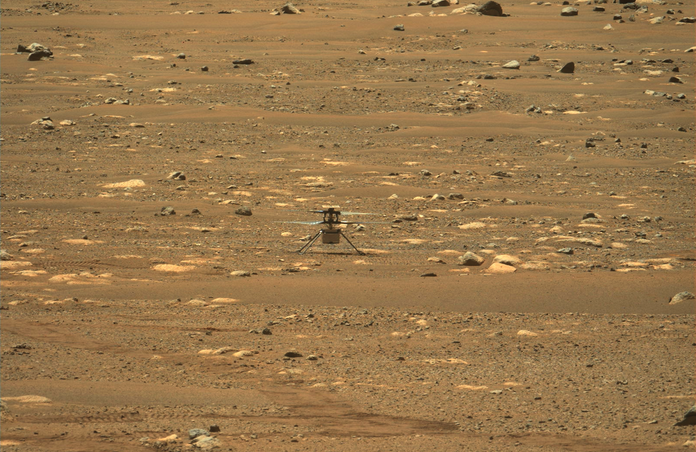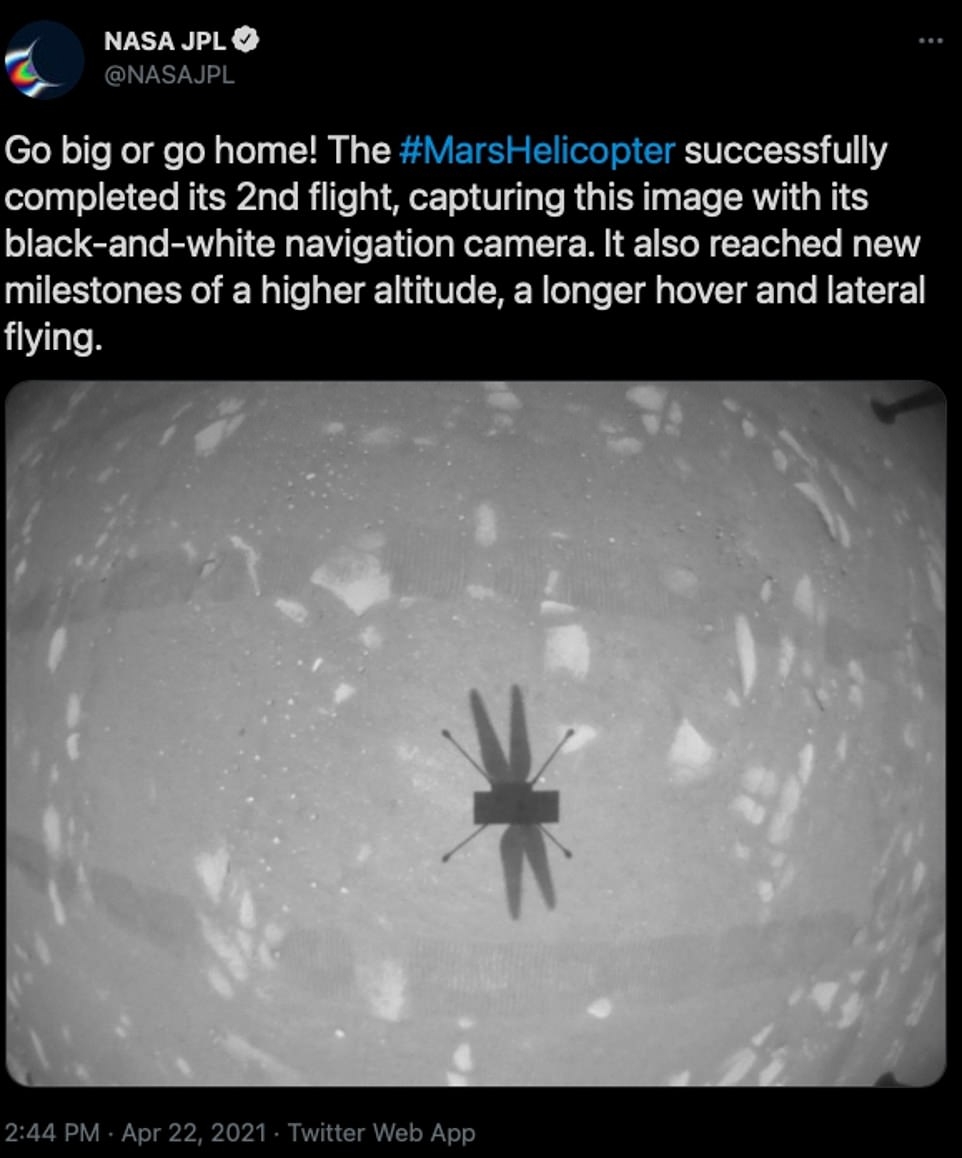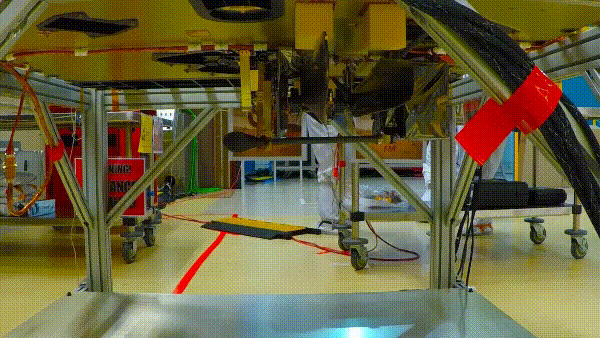Nasa's Ingenuity Helicopter First and Second Mars Flight

NASA’s drone-helicopter Ingenuity has achieved two successful flights on Mars.
On Monday 19th April at 8:37 am British time, a historic flight took place – 300 million kilometres away from Earth. The drone helicopter Ingenuity, companion of rover Perseverance, flew for 40 seconds 3 meters above the Martian surface in what is humankind’s first flight on another planet. The Mars vehicle has sparked discussion within our Telescope Live Community, and you can find out some information about the little 50cm-high, 1.8kg-heavy helicopter in Andre Becher’s post.
It took a long 10 days (21st March – 30st March) for the procedure to release the drone from its place inside the rover to finish: from cutting the cables that maintained it in place to protect it during the shakes of the launch and landing, then rotating it into the exit position, to finally cut the last cords and place the helicopter on the Martian surface, in a location now referred to as “Wright Brothers Field”.
You might remember from the previous Perseverance article that a major challenge when landing on Mars is the thinness of its atmosphere – this is also a problem to fly a helicopter-like device, which essentially relies on the atmosphere’s atoms to be lifted. Although the Martian gravity is just 38% of the Earth’s, Ingenuity’s carbon-fibre rotor blades still must spin at over 2500 rotations per minute to rise, five times faster than the best helicopters on Earth. Of course, this implies that landing smoothly is not a straightforward matter either, and it’s the combined success of this first flight and landing that make this mission a success. A further technical challenge is how cold it is on Mars, up to -90°C at night! The insulation of the copter and its solar-powered battery were closely monitored between its “landing” and the flight.
Rover Perseverance has taken the video, shown below, of this exceptional flight – NASA hopes to use its microphone to record the sound of the helicopter in an upcoming flight. The location of the rover, 60m away from its little partner, has been named Van Zyl Overlook after Jakob van Zyl, a member of the Perseverance team who passed away in August 2020 just after the mission was launched.
With its second flight this Thursday, Ingenuity reached a height of almost 5m. A higher flight, longer hover and lateral flying which foreshadow the best for the next three planned flights until mid-May.

Helicopters like Ingenuity may be part of the next generation of devices sent to our solar system’s planets and moons, as they could explore difficult terrains, even caves, provided they’ve got the right map of these places in their software. Possibly, they could accompany manned missions too. Ingenuity is really an experiment in itself, to confirm that it is possible to use this type of technology (including all its mechanical and electronic components) on Mars. For its part, Perseverance will continue its astrobiology experiments in the Jezero crater.
All image credits to NASA/JPL-Caltech/ASU/MSSS

